International tokamak research
Since the 1950s, more than 200 tokamak devices have contributed to the steady progression of research in magnetic confinement fusion. Today, veteran machines in China, Europe, India, Japan, Korea, Russia and the United States are re-orienting their scientific programs or modifying their technical characteristics to reinvent themselves—partially or totally—as test beds for ITER and for the next machine, DEMO.
A framework for coordinating fusion research activities internationally is the International Tokamak Physics Activity (ITPA), operated under ITER auspices since 2008. Please also visit our Fusion Links page, which has links to the literally hundreds of laboratories, universities and research centres around the world contributing to progress toward fusion energy.
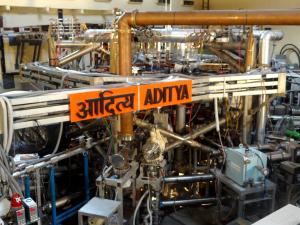
Aditya is a medium-sized tokamak that has been in operation at the Institute for Plasma Research in Gujarat since 1989.
ADITYA-U: a little sun
ADITYA (synonym of Sun in Hindi) is the first indigenously designed and fabricated tokamak in India. Located at the Institute for Plasma Research in Gujarat and operated since 1989, this medium-size tokamak conducts experiments with high plasma current at high temperature. Upgraded since its original construction with external heating systems, discharge cleaning systems and new diagnostics, it contributes to the international database of experimental results in the following areas: disruption mitigation, spontaneous and deliberately triggered disruptions and runaway electron generation and mitigation. The installation also serves to train students in tokamak operation and research.
ADITYA was recently upgraded from a limiter to a divertor device, designed for high temperature operation and good power exhaust efficiency. Read more about ADITYA-U here.
Alcator C-Mod: training future physicists on a high-field tokamak
The Plasma Science and Fusion Center at the Massachusetts Institute of Technology (MIT) in the US is home to Alcator C-Mod, a compact tokamak capable of high magnetic field and dense, well-confined plasmas.
Before closing in September 2016 due to funding decisions made by the US Department of Energy, research on Alcator C-Mod focused on divertor physics; detecting disruptions and minimizing consequences for present and future tokamaks; plasma control; the optimization of radio frequency heating; microwave current drive and its role in suppressing turbulence and increasing confinement; full exploration of an all-metal divertor target, including erosion; and diagnostics. As the largest university-based facility in the US, Alcator C-Mod also played an important role in training the next generation of plasma scientists. Experimental and theoretical teams continue to analyze and publish the results of 20 years of operation. You can read more about Alcator C-Mod here.
The MIT Plasma Science & Fusion Center has begun developing a conceptual design for SPARC, a compact, high-field, net fusion energy experiment. Read more about that concept here.
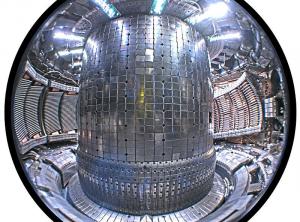
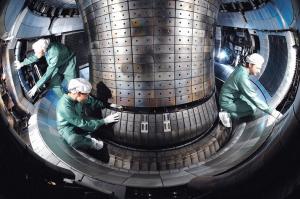
ASDEX Upgrade: investigating plasma stability and plasma-wall interaction
At the original ASDEX tokamak at the Max Planck Institute of Plasma Physics in Germany, an important discovery for tokamak operation was made in 1982: H-mode. This optimum, high-confinement operating mode has become the basis for advanced tokamak operation, including ITER.
Since 1991, ASDEX Upgrade has operated as a midsize experiment whose essential plasma properties—particularly plasma density, plasma pressure, and wall load—have been adapted to the conditions that will be present in future fusion power plants. With a power-plant-like geometry, a tungsten-clad vessel wall, and powerful and flexible plasma heating, ASDEX Upgrade contributes to the preparation of ITER and DEMO through studies focused on plasma-wall interactions and plasma stability. Two years of experimentation with the tungsten wall, for example, contributed to the ITER decision to install a tungsten divertor from the start of operations.
Read more about ASDEX Upgrade here. (Photo: IPP; Volker Rohde)
COMPASS-U: exploration of advanced confinement modes
COMPASS-U is under construction at the Institute of Plasma Physics (Czech Academy of Sciences) in Prague. It will replace the COMPASS tokamak, which successfully contributed to ITER-relevant plasma physics studies and to the education and training of a generation of physicists during its operational run from 2009 to 2021.
COMPASS-U will be the only medium-sized tokamak in the world capable of confining the plasma using magnetic fields up to 5 T and generating conditions similar to ITER and DEMO (plasma geometry, high power fluxes in the divertor region, high density...). It will be also able to operate with the first wall at the temperature of 500 °C, allowing scientists to make significant contributions to the design and operation of future fusion power plants. In particular, the device will be used by Czech and international colleagues to address some of the gaps in heat exhaust physics, one of the key challenges identified in the EUROfusion Roadmap to the Realisation of Fusion Energy.
Its unique characteristics will enable the exploration of advanced confinement modes and plasma configurations, and the testing of new plasma-facing materials and liquid metal divertor concepts. The start of operation is planned in 2024. Read more about the COMPASS upgrade here.
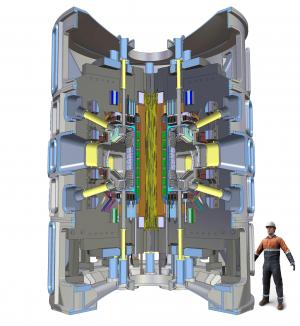
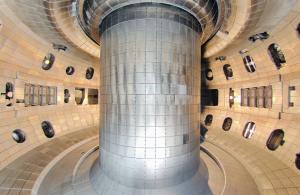
DIII-D: exploring key ITER physics issues and advanced operation scenarios
The DIII-D advanced tokamak was developed by General Atomics in San Diego (US) as part of the international effort to achieve magnetically confined fusion. The mission of the DIII-D research program is to establish the scientific basis for the optimization of the tokamak approach to fusion energy production.
In operation since the 1980s, DIII-D played an important role in providing data for the engineering design phase of ITER, a machine that incorporates many DIII-D features. DIII-D pioneered key fusion technology, including the use of beams of neutral particles for plasma heating and resonant magnetic perturbation (RMP) coils to suppress plasma instabilities called Edge Localized Modes (ELMs). DIII-D is currently exploring a wide range of scientific issues which will assist in optimizing ITER operation. These include: exploration of the effect that internal stabilization coils have on preventing energy bursts from the plasma edge; development of high-power microwave transmission line components with low energy losses; and work on software for controlling the plasma and protecting the ITER machine.
An upgrade of the machine's heating and diagnostics systems was completed in May 2019. Read more about the DIII-D advanced tokamak here.
Divertor Tokamak Test facility: the flexibility to investigate plasma exhaust
The Divertor Tokamak Test facility (DTT) is a new Italian fusion project that aims to address one of the major challenges identified in the European Fusion Roadmap: i.e., exhausting power from fusion reactors. DTT will begin operation with a tungsten-armoured divertor using the same technology developed for ITER. But it is also designed with the flexibility to try different divertor and magnetic geometries and, later, more esoteric approaches such as liquid metal targets that cannot be deployed on ITER.
The project, first proposed in 2015, is led by the Italian national Agency for New Technologies, Energy and Sustainable Development (ENEA) in collaboration with the Italian fusion community and international institutions. The DTT facility will be located in the ENEA premises in Frascati. The DTT Consortium has raised nearly EUR 500 million to construct the facility and industrial procurement is underway. Both DTT and ITER are expected to begin operation on roughly similar timescales. Read more about the project here.
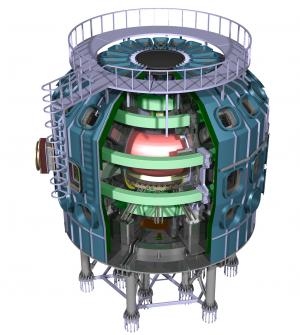
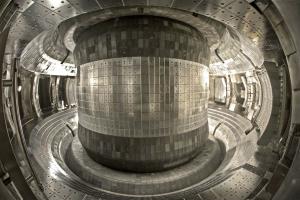
EAST: addressing the physics and technology issues of steady-state operation
First plasma was achieved in 2006 on the fully superconducting Experimental Advanced Superconducting Tokamak (EAST) at the Institute of Plasma Physics in Hefei, China. Since then, EAST has been upgraded with augmented auxiliary heating and operational capabilities and now operates with ITER-like magnetic configurations and heating schemes, allowing the exploration of plasmas over long timescales.
Research at EAST on physics and technology issues under steady-state operational conditions is directly relevant to ITER. Recent experiments have demonstrated the sustainment of high temperature plasmas in H-mode (see ASDEX-Upgrade) over a record timescale of more than 400 seconds, achieved by heating the plasma with radio-frequency waves. These results also suggested a potent new method for suppressing ELMs (see DIII-D) with radio waves. Scientists are also pursuing investigations of plasma-wall interactions on EAST under stationary conditions, exploiting the long-pulse capabilities of the machine's superconducting magnet systems. Read more about the EAST tokamak here.
Globus-M2: unique auxiliary heating
Globus-M2 is an upgrade of the Globus-M tokamak which operated from 1999 at the Ioffe Institute in Russia for ITER-related diagnostics development and materials testing.
The compact spherical tokamak has been equipped with new auxiliary heating systems and diagnostics, a revamped electromagnetic system allowing greater magnetic field and plasma current, and increased power supply. First plasma at Globus-M2 was achieved in April 2018. High plasma performance together with broad set of auxiliary heating equipment and comprehensive set of diagnostics provide favourable conditions for detailed research into the physics base of ITER and for the development of novel concepts such as a compact fusion neutron source (CFNS). See this page for more information.
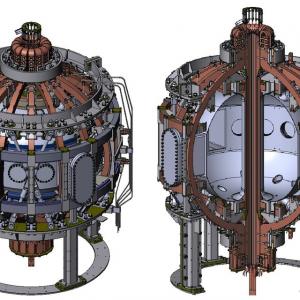
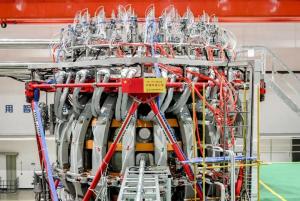
HL-3: studying frontier fusion physics
HL-3 (formerly HL-2M) is a medium-sized copper-conductor tokamak located at the Southwestern Institute of Physics (SWIP) in China. It is a totally new machine, with some systems upgraded from the HL-2A tokamak that has been in operation since 2002.
HL-3 aims at a more effective and flexible divertor, a new set of toroidal field coils, and a shaped plasma with improved stability. HL-3 will contribute to establishing the scientific and technical basis for optimizing the tokamak approach to fusion energy and prepare important scaling information for ITER operation. It is designed to have 3MA plasma current, and over 100 million degree Celsius ion temperature, greatly enhancing the highest parameters achieved in magnetic fusion devices so far in China.
First plasma was achieved in December 2020 at the CNNC Southwestern Institue of Physics. See this page for more information about the device.
JET (recently retired): an ITER-like wall and experiments with tritium
The Joint European Torus (JET), located at Culham Centre for Fusion Energy in the UK was the world's largest and most powerful tokamak between 1983 and 2023, and the focal point of European fusion research. Designed to study fusion in conditions approaching those needed for a power plant, it was the only device capable of handling the deuterium-tritium fuel mix that will be used in ITER and in later fusion power plants. Since first plasma in 1983, milestones at JET have included the world's first controlled release of deuterium-tritium fusion power (1991) and the world record for fusion power (16 megawatts in 1997). In more recent years, the program's primary task was to prepare for the construction and operation of ITER by acting as a test bed for ITER technologies and plasma operating scenarios:
* upgraded with an ITER-like beryllium and tungsten wall and additional heating power, JET enabled scientists to develop plasma scenarios that resembled as closely as possible those planned for ITER, investigate the interaction of the plasma with wall materials, and study the accumulation of tungsten from the wall in the plasma core;
* experiments to characterize the melting behaviour of tungsten run on the JET divertor provided valuable physics data input for the ITER divertor strategy (the choice to install a tungsten divertor from the start) and informed divertor physics in advance of ITER operation;
* with ITER-like regimes of plasma operation, scientists had the opportunity to study plasma instabilities such as ELMs (see DIII-D) and develop methods to predict and mitigate these instabilities;
In 2021, JET kicked off a scientific campaign with deuterium-tritium (D-T) plasmas and obtained excellent results (see this article). These experiments (the first to use tritium at JET since 2003) were an important "dress rehearsal" in preparation for ITER's operation with tritium. After a final campaign in autumn 2023, JET moved to repurposing and decomissioning in 2024. Read more about JET here.
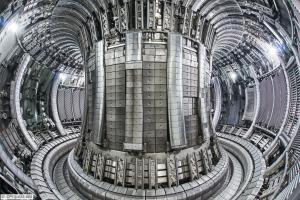
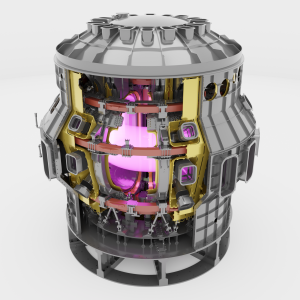
©F4E
JT-60SA: thinking ahead to the optimization of fusion power plants
The Satellite Tokamak Program, JT-60SA, is a major modification of the existing JT-60U tokamak at the Naka Fusion Institute in Japan. Part of the Broader Approach Agreement signed between Japan and Euratom (and implemented by QST Japan and the European Domestic Agency for ITER), it is designed to support the operation of ITER and to investigate how best to optimize the design and operation of fusion power plants built after ITER.
The JT-60SA research program will investigate critical areas of plasma physics, fusion engineering and theoretical models and simulation codes. These include the development of optimized operational regimes; questions of stability and control, transport and confinement, and high-energy particle behaviour; pedestal and edge physics; plasma-material interaction; fusion engineering; and theoretical models and simulation codes.
The upgraded tokamak achieved first plasma in October 2023, after a long period of commissioning. It is now the largest operating tokamak in the world. Read more about the JT-60SA upgrade project here.
KSTAR: a pilot device for ITER
KSTAR—short for Korea Superconducting Tokamak Advanced Research—joined the ranks of superconducting tokamaks when it achieved first plasma in 2008 after 11 years of construction at the National Fusion Research Institute in Daejon.
Through long-pulse operation, the machine is capable of contributing to the investigation of the plasma physics of future steady-state fusion power plants. Standard ITER CODAC (Control, Data Access and Communication) technologies have been tested in advance on KSTAR, successfully demonstrating their adaptability and operability for tokamak control. Characteristics of the machine's superconducting magnet and cryogenic systems also provide valuable data to the design and operation of ITER in terms of quality control and assurance for fabrication and assembly. A series of leading edge heat load experiments with tungsten monoblocks have also been performed to study power balance and to support a divertor shaping decision on ITER.
KSTAR will be utilized as a test bed for the 170 GHz gyrotron and the 5 GHz klystron for ITER's electron cyclotron heating and lower hybrid current drive. Since 2011, scientists have achieved successful results in the mitigation of ELMs, using techniques previously demonstrated on DIII-D and Asdex Upgrade. In 2023, the machine was upgraded with a tungsten divertor, with the goal of achieving 100 million degrees plasma for 300 seconds by 2026. Read more about KSTAR here.
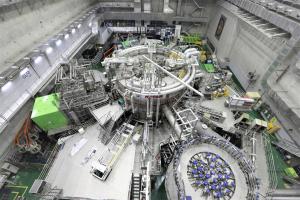
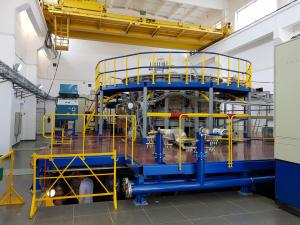
KTM tokamak: materials research for ITER
The KTM tokamak was designed in 2000 to model plasma-material interaction under the conditions expected at ITER—the first technological tokamak for reactor material science, allowing plasma-facing materials to be tested under a wide range of exposure (fluence).
Based at the National Nuclear Center in the city of Kurchatov, Kazakhstan, KTM (for Kazakhstan Tokamak for Material testing) has a vacuum vessel volume of 12.3 cubic metres (compared to ITER's 840 cubic metres), and an array of non-superconducting magnetic coils. The unique design of its divertor—made up of plasma-facing plates mounted on a rotary table—allows for the replacement of the plates without a breach in the vacuum of the plasma chamber. This versatility makes KTM an ideal device for materials testing.
For fusion scientists and engineers, developing the materials that will be able to maintain their structural and thermal conduction properties at the heat and neutron fluence levels expected in a fusion reactor is one of the key challenges on the road to fusion electricity. Commissioning operations at the facility were carried out in 2017. (See the website in Russian.)
MAST Upgrade: a spherical tokamak to test plasma regimes
Since being commissioned in 2000, the Mega Amp Spherical Tokamak MAST has made significant contributions to fusion physics, particularly in understanding the instabilities that form at the edges of the plasma.
Run from 2000 to 2013 by the Culham Centre for Fusion Energy (CCFE) in the UK, MAST was recently upgraded to investigate the super-X divertor—a magnetic configuration that spreads the heat loads at the divertor area of the machine. Other features of the upgrade include an increase in the pulse length by a factor approaching ten, additional heating power, and better control and pumping capacities to contain the resulting higher temperature, longer-pulse plasmas.
Future reactors must run for hours or days rather than the seconds of today's devices. The MAST Upgrade will allow scientists to study plasmas that approach this operational mode, known as "steady-state." First plasma was achieved on the upgraded device in October 2020. Read more about the MAST upgrade here.
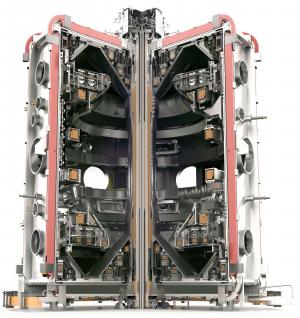
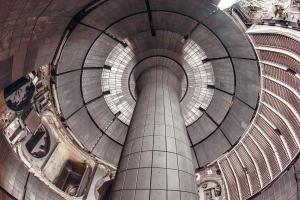
NSTX-U: contributing to the studies of plasma behaviour
The National Spherical Torus Experiment (NSTX), in operation since 1999 at the Princeton Plasma Physics Laboratory in the US (New Jersey), is a magnetic fusion device that, like MAST, is based on the spherical tokamak concept.
A major upgrade was completed in 2016 that has doubled the strength of both its electric current and magnetic fields. Research at NSTX-U will contribute to understanding how the plasma will behave and perform in ITER. Experiments on the revamped NSTX-U, with its new central solenoid, additional neutral beam injector and reinforced structure, will allow scientists to investigate the cause of plasma disruptions, advance toroidal confinement physics predictive capabilities, and study the effect of increased power flux on wall materials.
Currently completing repairs, NSTX-U is expected to resume operations in 2025. Read more about NSTX-U here.
SST-1: joining the ranks of superconducting research tokamaks
The Indian Steady State Superconducting Tokamak (SST-1) was fully commissioned in 2013. Located at the Institute for Plasma Research in Gujarat, India, SST-1 produces repeatable plasma discharges up to ~ 500 ms with plasma currents in excess of 75000 A at a central field of 1.5 T.
SST-1 routinely operates with an ITER-like electric field of ~ 0.35 V/m assisted by electron cyclotron resonance pre-ionizations in both fundamental and second harmonic modes. The SST-1 plasma carries all the standard attributes of tokamak plasma in contemporary devices. SST-1 is also the only tokamak in the world with superconducting toroidal field magnets operating in two-phase helium instead of supercritical helium in a cryo-stable manner, thereby demonstrating reduced cold helium consumption. SST-1 also runs steady state plasma discharges to explore the interaction between the plasma and the first wall of the tokamak. The objectives are to study feedback and control, divertor operation, and plasma-wall interactions in steady state plasmas. Read more about SST-1 here.
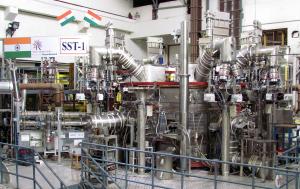
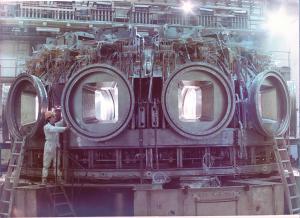
T-15MD : determining optimal reactor parameters
The superconducting T-15 tokamak was operated from 1988 to 1995 at the Kurchatov Institute in Moscow, Russia.
Today, the tokamak has been upgraded with auxiliary plasma heating and current drive systems that will allow the simultaneous achievement of high plasma temperature and high plasma density. The systems—which include three neutral beam injectors, electron cyclotron resonance heating (seven gyrotrons), ion cyclotron resonance heating (three antennas) and low hybrid heating and current drive with pulse duration up to 30 s—will be used to control plasma parameter profiles.
Research on the T-15MD will support ITER, DEMO and fusion neutron source planning and operation and will contribute to the determination of optimal parameters for future fusion reactors and for solving problems in atomic power engineering. A launch ceremony took place in May 2021. Read more about the modification of T-15 here.
TCV: versatility for the study of differently shaped plasmas and localized heating
TCV is a variable configuration tokamak for the study of differently shaped cross-sections of the plasma run by the Swiss Plasma Center of the EPFL (Ecole Polytechnique Fédérale de Lausanne) in Lausanne.
The mission of the TCV program is to apply its highly specialized capabilities (plasma shaping, versatile electron cyclotron heating, measurement and control systems) to the exploration of the physics of magnetically confined plasmas. TCV supports ITER and also explores the way to a prototype fusion reactor.
In 2014, TCV underwent a major upgrade in heating power with the installation of a 1MW neutral beam injection system. In 2023, TCV celebrated 30 years of operation. Read more about TCV here.
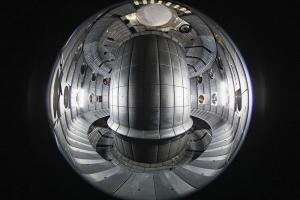
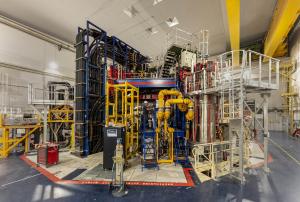
WEST: investigating a tungsten divertor for ITER
Tore Supra is a superconducting tokamak that has been in operation at the Institute for Magnetic Fusion Research (CEA Cadarache, southern France) since 1988. It was the first tokamak to successfully implement superconducting magnets and actively-cooled plasma-facing components, and has specialized in the physics exploration of long-duration plasma pulses, reaching a record of 6.5 minutes in December 2003.
After 46,000 plasma shots, Tore Supra was reconfigured beginning in 2009 as a test bed for ITER. With a new, actively-cooled tungsten divertor, WEST for "W Environment in Steady-state Tokamak" (where W is the chemical symbol for tungsten), is testing tungsten technology, acquire data on metal fatigue, and exploring the components' boundary conditions in advance of ITER.
On 14 December 2016, the reconfigured machine achieved its First Plasma. Experimental campaigns followed, and in June 2023, the WEST team celebrated the end of a 14-week campaign with a full tungsten divertor. Read more about WEST here.
